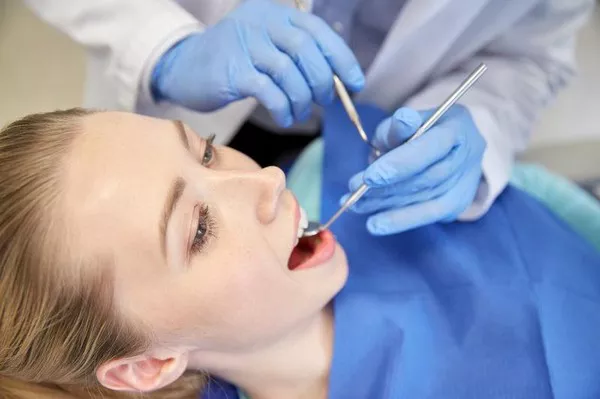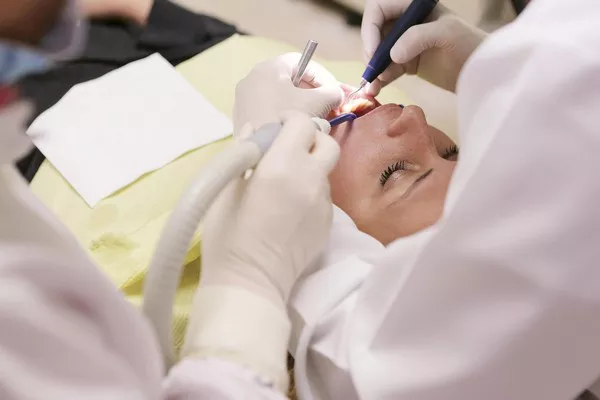In the realm of orthodontics, the pursuit of a thorough oral hygiene routine can become a significant concern, especially for those undergoing orthodontic treatment with braces. Many individuals wonder if they can attain a deep cleaning while wearing braces, balancing the desire for a pristine smile with the challenges posed by orthodontic appliances. In this comprehensive guide, we will delve into the intricacies of maintaining optimal oral health during orthodontic treatment, exploring various strategies and tools that can help you achieve a deep clean even with braces on.
1. The Importance of Deep Cleaning During Orthodontic Treatment
Orthodontic braces, while essential for aligning teeth, can create additional nooks and crannies that make cleaning more challenging. Plaque and food particles are prone to accumulate around brackets and wires, increasing the risk of cavities and gum issues. It is crucial to understand that neglecting oral hygiene during orthodontic treatment can lead to undesirable consequences. According to a study published in the Journal of Orthodontic Science, patients with poor oral hygiene during orthodontic treatment are more susceptible to enamel demineralization and gum inflammation.
2. Choosing the Right Tools for Effective Cleaning
a. Interdental Brushes:
One effective tool for maintaining oral hygiene with braces is the interdental brush. These small brushes can reach tight spaces between brackets and wires, removing debris that regular toothbrushes might miss. According to the American Dental Association (ADA), interdental brushes are particularly useful for cleaning around orthodontic appliances.
b. Water Flossers:
Water flossers provide an alternative method for deep cleaning with braces. These devices use a stream of water to dislodge particles from hard-to-reach areas. A study in the Journal of Clinical Periodontology found that water flossers can be highly effective in reducing plaque and gingivitis in orthodontic patients.
c. Soft-Bristled Toothbrushes:
Opting for a toothbrush with soft bristles is crucial when wearing braces. Soft bristles are gentle on both teeth and orthodontic appliances, preventing damage to wires and brackets. The British Orthodontic Society recommends using a small-headed toothbrush with soft bristles for effective cleaning during orthodontic treatment.
3. Establishing a Comprehensive Oral Care Routine
a. Frequency of Brushing:
The frequency of brushing plays a pivotal role in maintaining oral health with braces. Dentists recommend brushing after every meal and before bedtime to minimize the accumulation of plaque. According to a study in the Journal of Clinical Orthodontics, patients who brushed their teeth more frequently had lower rates of enamel demineralization.
b. Fluoride Mouthwash:
Incorporating a fluoride mouthwash into your oral care routine can provide an additional layer of protection against cavities. Fluoride helps strengthen enamel and reduces the risk of decay. The American Academy of Pediatric Dentistry suggests using a fluoride mouthwash as part of a comprehensive oral care strategy.
c. Regular Dental Check-ups:
Despite meticulous at-home care, regular dental check-ups are indispensable during orthodontic treatment. Dentists can identify potential issues early on and provide professional cleaning to ensure the longevity of your oral health. According to the Journal of Dentistry, orthodontic patients who attended regular check-ups had better oral hygiene outcomes.
4. Overcoming Challenges:
a. Dealing with Sensitivity:
Orthodontic patients may experience increased sensitivity during treatment. Using toothpaste formulated for sensitive teeth can alleviate discomfort. The International Journal of Dentistry suggests that maintaining oral hygiene can help reduce sensitivity associated with orthodontic treatment.
b. Coping with Orthodontic Wax:
Orthodontic wax, used to alleviate irritation caused by braces, can sometimes make cleaning more challenging. Gently removing wax before brushing and flossing ensures a more effective cleaning process. The Journal of Clinical Orthodontics recommends the careful removal of wax to prevent plaque accumulation.
In conclusion, achieving a deep clean with braces on is not only possible but imperative for maintaining optimal oral health. By adopting a comprehensive oral care routine, utilizing the right tools, and addressing challenges head-on, individuals undergoing orthodontic treatment can enjoy a beautiful, healthy smile throughout their journey. Remember, a commitment to oral hygiene during this time will pay off in the form of a dazzling, well-aligned smile in the future.
Related Links:
How often should scaling of teeth be done?
How long does a deep dental cleaning take?
How often should you get a scale and polish?
































